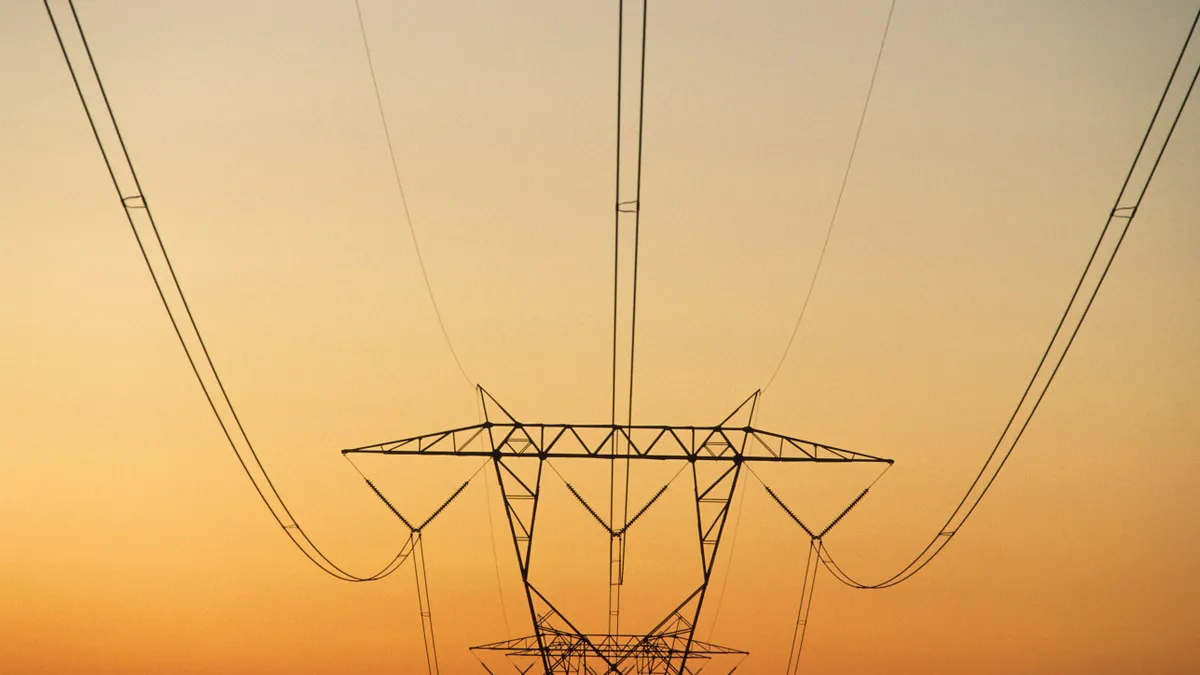The retirement of thousands of megawatts of dispatchable generation while electricity demand continues to grow is a threat to grid reliability in some parts of the country, but experts say greater transfer capacity between regions and demand management strategies can manage the long-term risk.
Most of the U.S. will face an elevated risk of blackouts should summer weather turn extreme, the North American Electric Reliability Corp. said in its 2023 Summer Reliability Assessment, published in May. But the summer 20233 assessment is an improvement over the 2022 assessment, and the Federal Energy Regulatory Commission expects much of the country to see lower energy prices and somewhat lower reliability risks compared with last year.
On Wednesday, the American Council on Renewable Energy convened a panel to discuss the summer assessment. The panel largely concluded that NERC’s report is not dire.
“I don't think there's anything specific or alarming out of the NERC report, but it highlights the continuing risks that the regions face,” said Andrew French, a commissioner on the Kansas Corporation Commission and its representative to the Southwest Power Pool. “The big issue is we're seeing shrinking capacity reserve margins as traditional thermal resources close, and they're not necessarily being replaced in a one-to-one fashion.”
“Nothing in this report is really concerning me,” said Nicole Hughes, executive director of Renewable Northwest. “It is more of an indication of risks to come.”
In California “we're looking better than we were at this time last year, largely due to significantly improved hydro conditions ... as well as new resource additions,” said Danielle Osborne Mills, principal of infrastructure policy development with the California Independent System Operator.
Solutions to long-term reliability challenges include the development of additional regional transmission, changes to how resource attributes are valued, and load management approaches, the panel members agreed.
“It's all about the size of our grid,” Hughes said. She also noted the importance of demand response in extreme weather events. “It's critical to ensure we have markets that value that resource.”
California is developing a subscriber participating transmission owner model to allow developers to deliver generation into the state without increasing access charges. The ISO is close to a final proposal, said Mills.
“We are also looking at opportunities to improve transmission planning across the West and looking at inter-regional transmission planning projects,” Mills said.
“There is a new focus on identifying the reliability attributes that we need from our overall generation and within our [regional transmission organizations] and setting rules to make sure we have enough of those attributes,” French said.
Kansas is within the SPP region, which can reach “incredible” levels of renewable penetration, French said — over 90%, in some instances. “But, unfortunately, it's not always that way ... just last week, we had a record for the lowest amount of load served by renewables” as wind production declined, he said.
In the short term, improving reliability could mean retaining some dispatchable generation. In the longer term, “I hope we’re valuing the reliability attributes of greatly expanded demand response and the reliability attributes of interregional transmission,” French said.
“Transmission plays a really important role here,” said Hughes. “Specifically in [the Northwest], we have clean energy standards that [investor-owned utilities] need to meet, and we have the generation that's in development. We're just really having a hard time bringing that to load because of lack of transmission.”
Reliability issues do not just come up during summer, of course, said Simon Mahan, executive director of the Southern Renewable Energy Association. The Southeast saw outages in multiple utility territories during Winter Storm Elliott in December. Regional transfer capacity helped, but it was not sufficient in all areas.
The Tennessee Valley Authority was importing about 6 GW from the Midcontinent Independent System Operator, Mahan said, but slightly further south, Southern Co. was “getting just a trickle.”
“It was really difficult for [operators in] our region to help support one another because the balancing areas that our utilities operate are too small,” Mahan said. “If you have a larger balancing area, like a PJM or a MISO or an SPP, you're able to get outside of the weather. You have geographic diversification, but you also have resource diversification, different types of generation resources that are not all reliant on the same type of fuel.”























